How Much Does a Spine Tattoo Cost?
A spine tattoo is a unique form of body art that adorns the human spinal column, an area stretching from the nape of the neck to the lower back. This placement accentuates the natural contours of the body, resulting in a visually captivating expression of personal identity. However, such a tattoo is not only a statement of individuality but also a financial investment.
The cost of a spine tattoo is subject to numerous factors, such as the tattoo’s size, the artist’s experience, and the geographical location. For instance, a small, basic design can start from around $50, while an intricate, full-back piece could extend beyond $1000. Furthermore, the hourly rate of an artist can range from $80 for a novice to over $300 for a renowned professional.
This article explores these variables in detail to provide a comprehensive understanding of the potential expense involved in obtaining a spine tattoo.
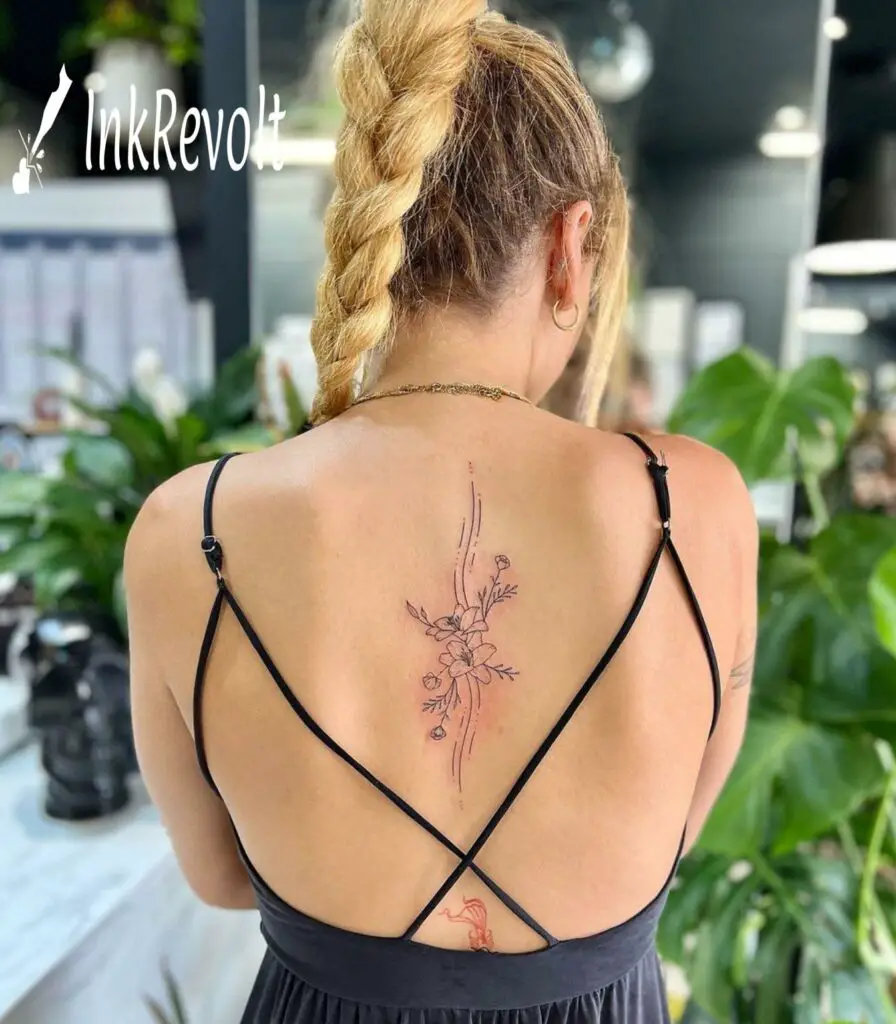
Factors Influencing the Cost of a Spine Tattoo
The cost of a spine tattoo is influenced by a multitude of factors. Each of these factors contributes to the final price in different ways. Here’s a more in-depth look at these elements:
Tattoo Artist’s Experience
The experience of the tattoo artist is a significant factor in the cost of a spine tattoo. Artists with more years in the field and a solid portfolio often charge more for their services. This is due to the high level of skill, precision, and understanding of the craft they bring to the table.
According to a survey conducted by Tattoos Hurt, tattoo artists with less than 3 years of experience might charge around $80 to $120 per hour. In contrast, artists with over 5 years of experience can charge upwards of $150 to $250 per hour. This difference in price is a reflection of the quality and safety you can expect.
Tattoo Size
The size of the tattoo is directly proportional to the cost. Larger tattoos require more ink, more time, and more effort from the artist.
As a general rule, small tattoos (around 2 inches in size) might start at around $50, while larger pieces (over 6 inches) can easily reach $500 or more. However, these prices can vary widely based on the other factors we’re discussing.
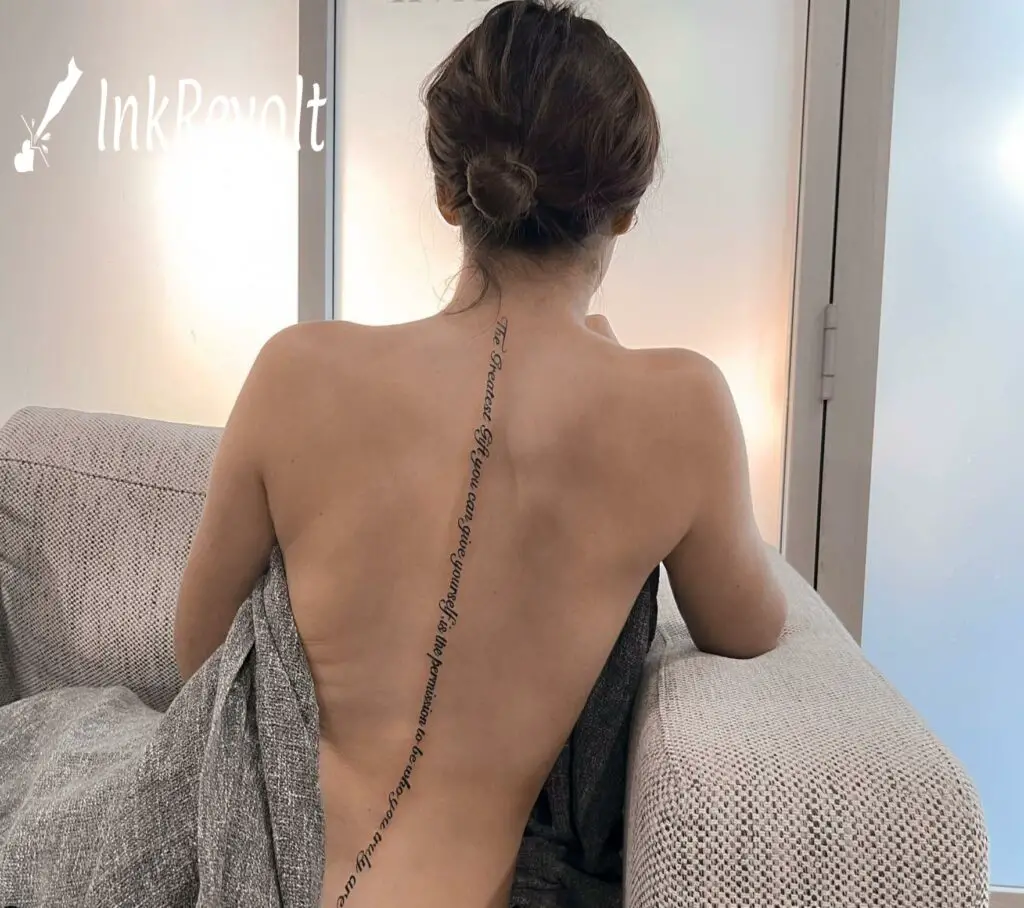
Tattoo Design
The complexity of the tattoo design can significantly impact the cost. A simple, minimalistic design will take less time and effort to complete compared to a complex, detailed piece.
For instance, a simple line design or a short quote along the spine might cost between $100 to $200. In contrast, a detailed, intricate design like a floral or geometric pattern running down the entire spine could cost anywhere from $500 to $1000 or more.
Tattoo Color
The choice of color in a tattoo can also affect the cost. Black and grey tattoos are generally less expensive than colored ones. This is because colored tattoos require more skill to ensure the colors blend well and stand out. Additionally, colored inks are often more expensive than black ink.
Tattoo Location
A survey by Custom Tattoo Design found that colored tattoos can cost 20% to 100% more than their black and grey counterparts.
The location of the tattoo on the body can influence the cost. Some areas, like the spine, are more sensitive and difficult to tattoo. This can require more skill and time from the artist, which can increase the cost.
According to a report by Tattoo Inksider, difficult locations like the spine or ribs can increase the cost of the tattoo by up to 25%.
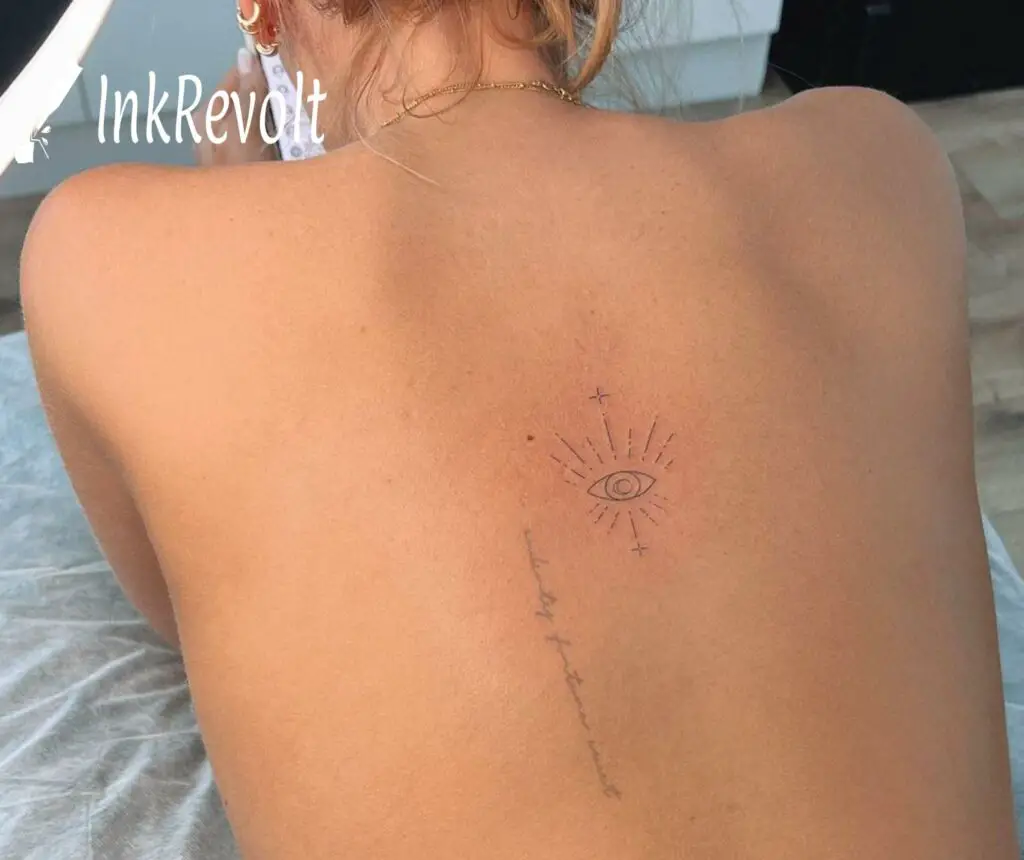
Geographical Location
Lastly, the geographical location of the tattoo studio can impact the cost. Studios in urban areas or cities with a high cost of living often charge more than those in rural areas or cities with a lower cost of living.
For example, a spine tattoo that costs $500 in New York City might only cost $300 in a small town in the Midwest.
Here I have prepared a table for you considering all the cost factors of a spine tattoo.
| Factor | Price Range ($) | Explanation |
|---|---|---|
| Size | ||
| Small tattoo | 50-200 | Basic designs and limited detail |
| Medium tattoo | 200-600 | Greater detail and complexity |
| Large tattoo | 600+ | Intricate designs and full back coverage |
| Artist’s Experience | ||
| Apprentice artist | 80-120/hour | Just beginning their career, limited experience |
| Mid-level artist | 120-200/hour | Several years of experience, some recognition |
| Highly experienced artist | 300+/hour | Renowned in the industry, high demand |
| Geographical Location | Varies | |
| City with higher cost of living | Higher | Higher living costs mean higher overhead expenses |
| City with lower cost of living | Lower | Lower living costs mean lower overhead expenses |
| Aftercare Supplies | 20-35 | Healing ointments, creams, bandages, and other wound care supplies |
| Touch-up Sessions | 50-100/session | Cost can vary depending on the amount of work needed |
| Complexity of Design and Color | Varies | More complex designs or those with multiple colors generally cost more |
| Potential Unexpected Costs | Varies | Costs may fluctuate due to unforeseen complexities in the design or application |
Read Next: Cost of A Henna Tattoo
Average Cost of Spine Tattoos
Given the factors mentioned above, it’s challenging to pin down an exact cost for spine tattoos. However, on average, you can expect to pay between $200 and $800 for a medium-sized, moderately complex spine tattoo.
Please note that this is a rough estimate, and actual costs can vary significantly. Always consult with your chosen tattoo artist for a more accurate quote.
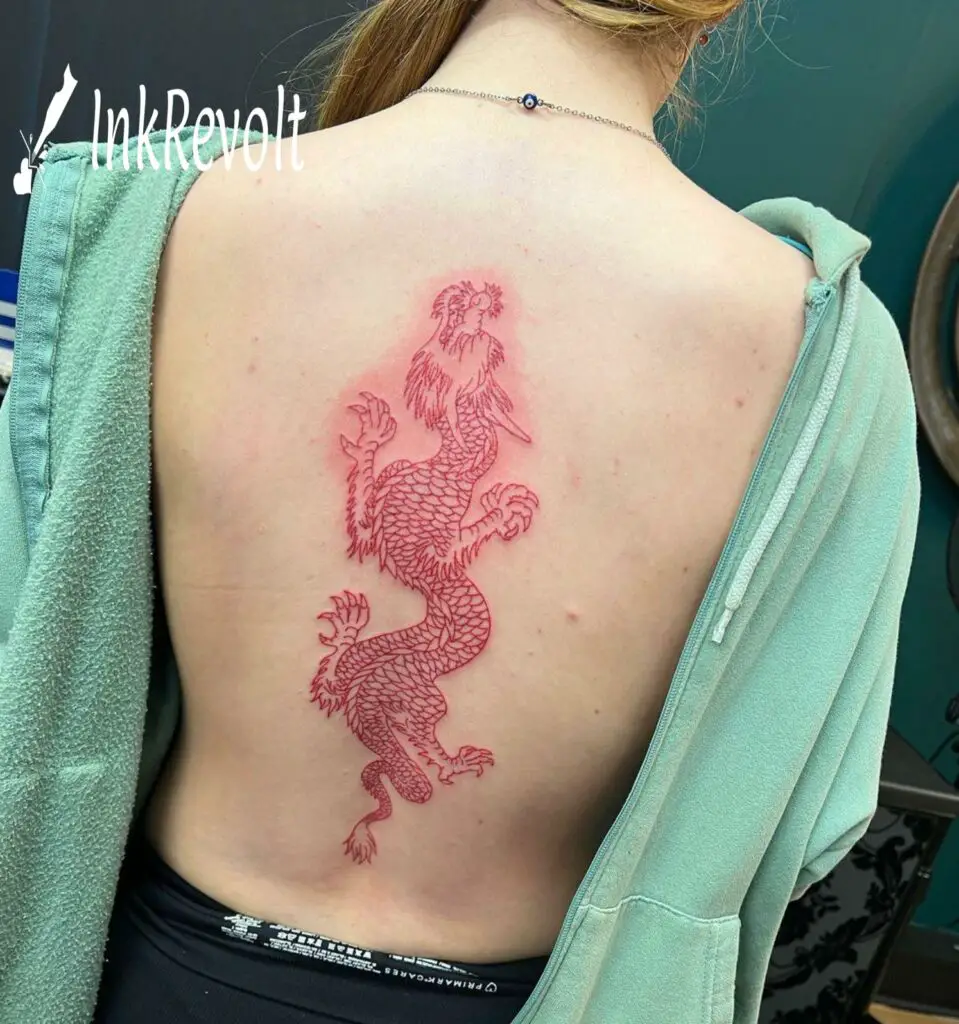
Additional Costs
Beyond the initial payment at the tattoo studio, you’ll incur additional costs related to aftercare and possible touch-ups. Here’s a simple breakdown:
Aftercare Costs
The health of your skin and the quality of your tattoo depend heavily on proper aftercare. This involves expenses for healing ointments, creams, bandages, and other wound care supplies.
- Healing Ointments and Creams: Quality creams and ointments cost between $10 to $20. You may need more than one tube during your healing process depending on your tattoo’s size.
- Bandages and Wound Care Supplies: In the early days post-tattoo, you’ll need bandages and other wound care supplies. Expect to spend around $10 to $15 for these.
Touch-Up Session Costs
Especially for large or intricate tattoos, touch-ups may be necessary over time.
- Regular Touch-Up Sessions: Many artists offer a free touch-up within the first few months. After this period, touch-up sessions range from $50 to $100, varying based on the size of the tattoo and the work required.
- Impact of Original Tattoo Design: The cost of touch-ups also depends on the original design. More detailed or colorful designs could need more frequent and thus more expensive touch-ups.
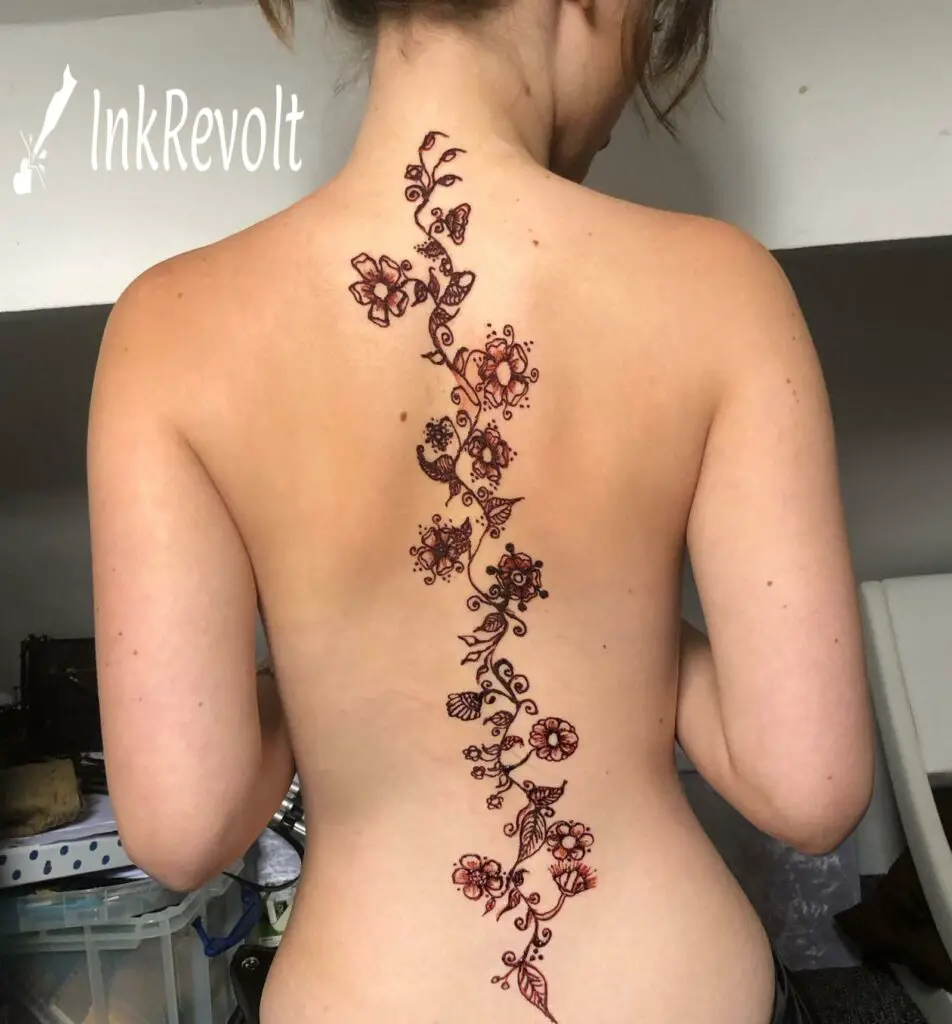
Cost-Saving Strategies for Spine Tattoos
Though getting a spine tattoo can be costly, there are methods to manage your budget without sacrificing quality. Here’s a simplified guide:
Opting for Simpler Designs
A simpler design can significantly cut down your costs.
- Design Examples & Prices: A minimalist piece, like line art or a brief quote, might cost between $100 and $200. On the other hand, detailed tribal designs or color-intensive pieces could exceed $500.
- Ink Color’s Impact on Cost: Going for black ink can also be cost-effective as it’s typically cheaper and demands fewer touch-ups compared to colored inks.
Saving on Aftercare Supplies
You can economize on aftercare supplies while still ensuring top-notch care for your tattoo.
- Affordable Aftercare Alternatives: Some over-the-counter products or natural solutions like coconut oil can replace branded aftercare items.
- Budget-Friendly Aftercare Tips: Keeping the tattoo clean and moisturized, avoiding sun exposure, and not scratching the area can minimize the need for expensive aftercare products.
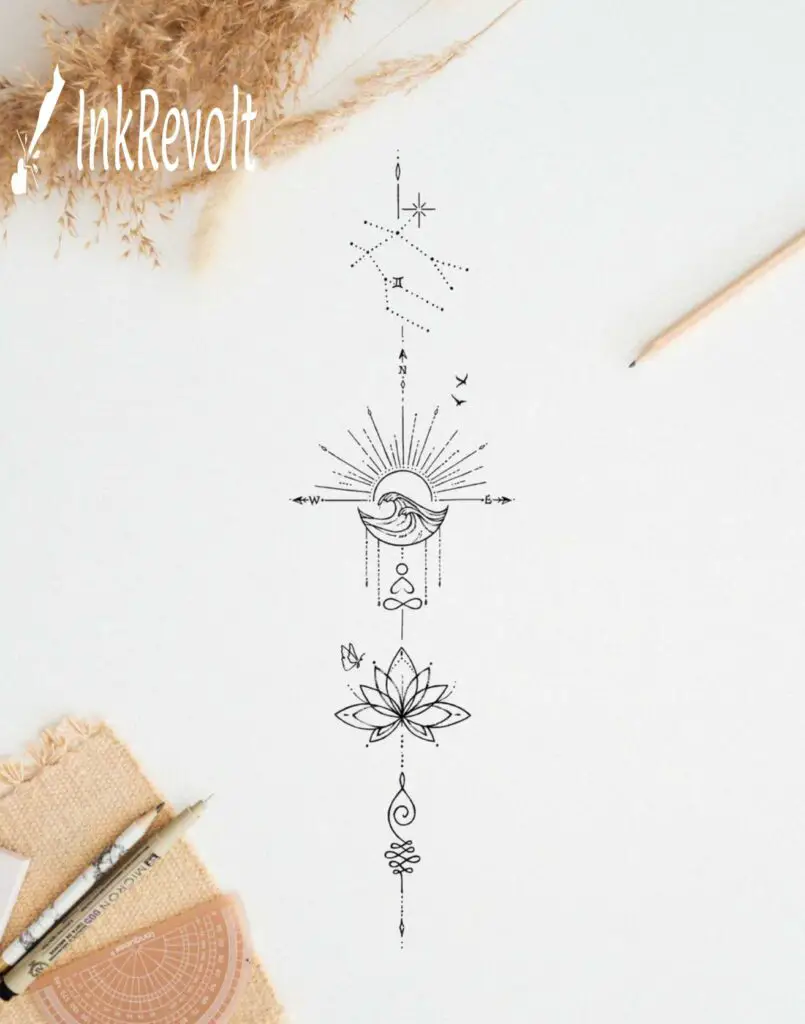
Choosing the Right Artist
Selecting an artist isn’t just about their rates. Though cheaper might seem attractive, remember that tattoos are permanent.
- Considering Apprentices or New Artists: Artists who are still building their portfolios may charge less and are often eager to deliver high-quality work. However, always review their prior work for quality assurance.
- Balancing Cost and Risk: While cost matters, it’s crucial to not compromise on hygiene and safety standards. A cheap tattoo might result in skin complications, leading to higher costs later.
How to Prepare For A Spine Tattoo
Preparing for a spine tattoo involves both mental and physical preparation. By taking time to thoroughly plan and prep, you can ensure a smoother tattooing process and ultimately, a piece of art you’ll be proud to wear. Here’s a step-by-step guide:
Researching and Finalizing Your Tattoo Design
Your tattoo will be a permanent fixture on your body, so it’s crucial that you’re completely happy with the design you choose.
- Find Inspiration: Look for designs that resonate with you. You can explore tattoo galleries online, read tattoo magazines, or even draw inspiration from art and nature.
- Customize Your Design: If you want a unique tattoo, consider hiring a professional tattoo artist to create a custom design for you. They can take your ideas and turn them into a design that suits your personal style and the placement on your spine.
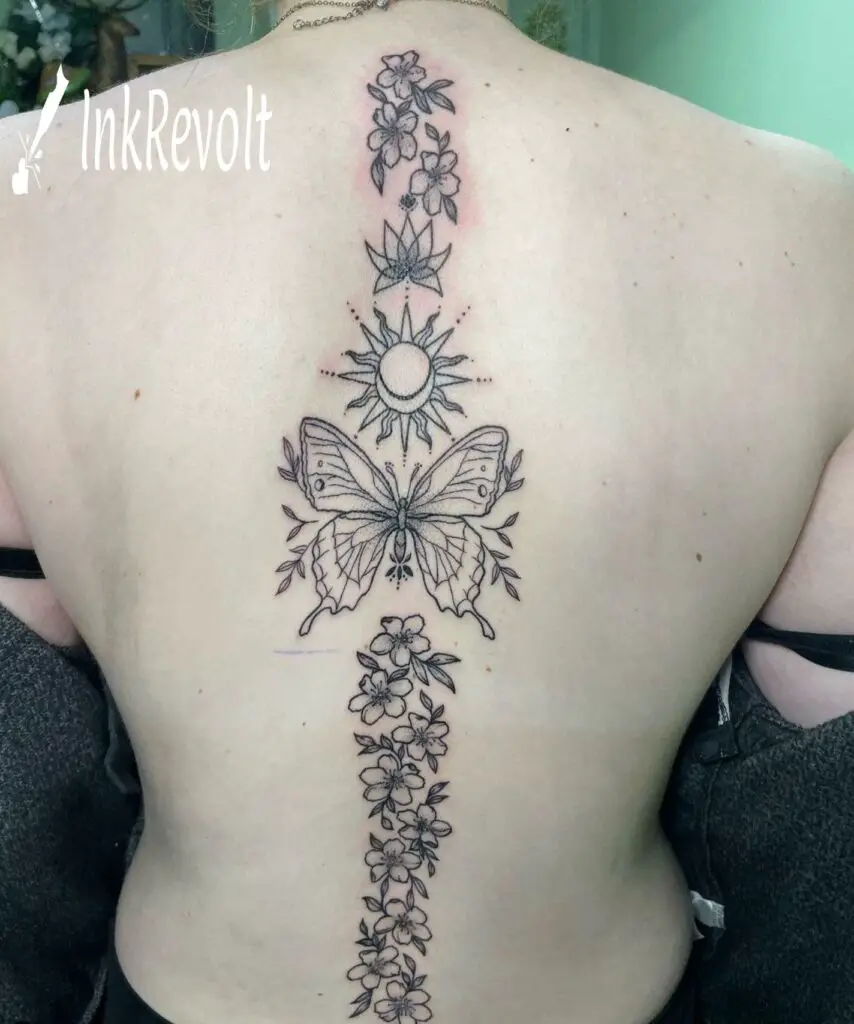
Choosing the Right Tattoo Artist
The skill and experience of your tattoo artist can significantly affect the quality of your tattoo and the tattooing experience.
- Check Portfolios: Review the artists’ previous work to evaluate their skills, especially in the style you’re interested in.
- Check Reviews and Testimonials: Look for reviews and testimonials from past clients. They can provide insights into the artist’s professionalism, cleanliness, and how they handle their clients.
- Meet with Artists: If possible, meet with potential artists in person to discuss your design ideas, their process, and any concerns you might have.
Taking Care of Your Health
Your overall health can affect how well your body handles the tattooing process and how quickly it heals.
- Rest Well: Make sure to get a good night’s sleep before your tattoo appointment. Being well-rested can help you cope better with the discomfort of the tattooing process.
- Stay Hydrated and Eat Well: Drink plenty of water and have a substantial meal before your appointment. This can help prevent dizziness or fainting during the session.
- Avoid Certain Substances: Try to avoid alcohol, caffeine, and aspirin for at least 24 hours before your appointment. These can thin your blood and cause excessive bleeding during the tattooing process.
Preparing for the Tattoo Session
There are a few things you can do on the day of your appointment to ensure a smoother experience.
- Wear Appropriate Clothing: Wear loose, comfortable clothing that provides easy access to your spine but also allows you to maintain some level of privacy.
- Bring Snacks and Entertainment: The tattooing process might take a few hours, especially for a larger or more detailed design. Bringing snacks can help keep your energy up, and having something to entertain you can make the time pass more quickly.
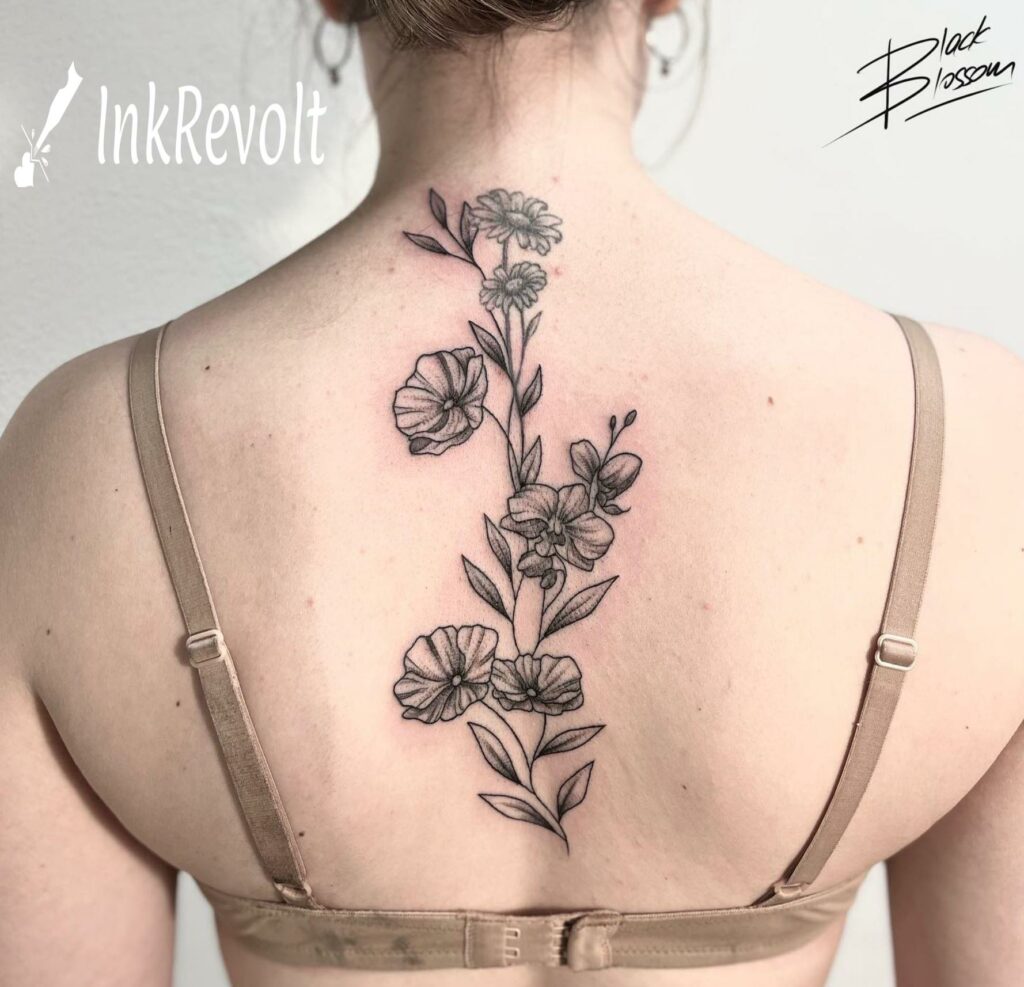
Remember, getting a tattoo should never be a rushed decision. Take your time, do your research, and make sure you’re ready both mentally and physically for the commitment.
Frequently Asked Questions
How much does a spine tattoo cost on average?
The cost of a spine tattoo can vary greatly depending on various factors such as the artist’s experience, the size and complexity of the design, the use of color, and the geographical location. However, on average, you can expect to pay between $200 and $800 for a medium-sized, moderately complex spine tattoo.
Are colored tattoos more expensive than black and grey ones?
Generally, colored tattoos cost more than black and grey ones due to the additional time and skill required to blend and apply different shades. A survey by Custom Tattoo Design found that colored tattoos can cost 20% to 100% more than their black and grey counterparts.
How can I prepare for getting a spine tattoo?
Spend time researching to find a reputable artist who specializes in the style of tattoo you want. Have a consultation with the artist to discuss your design, size, placement, and any questions you may have. Follow the aftercare instructions provided by your artist to ensure proper healing and longevity of your tattoo.
How much does a tattoo on the spine hurt?
Pain is subjective and varies from person to person. However, the spine is a sensitive area with less fat padding and more nerve endings, so getting a tattoo here can be more painful compared to other body parts. It’s important to note that a professional tattoo artist will use techniques to manage the pain as much as possible.
How long does a spine-back tattoo take?
The duration of a spine tattoo session depends on the size and complexity of the design. A small, simple design might take 1-2 hours, while a large, intricate piece could take several sessions of several hours each. Your tattoo artist can give you a more accurate estimate based on your specific design.
Can I wear a bra after a spine tattoo?
It’s generally recommended to avoid wearing tight clothing, including bras, over a new tattoo to prevent irritation and allow the skin to breathe and heal. If you must wear a bra, try to wear one that doesn’t rub against the tattoo, or consider using a protective barrier like a bandage.
What do you wear when you get a spine tattoo?
When getting a spine tattoo, it’s best to wear loose, comfortable clothing that provides easy access to the area. A button-up shirt worn backwards can be a good option. Remember, the area will be sensitive after the tattooing process, so plan your outfit accordingly.
Can I sleep on my spine tattoo?
It’s recommended to avoid sleeping directly on a new tattoo for the first few days to prevent rubbing and sticking to the sheets. If your new tattoo is on your spine, try sleeping on your side or stomach. Always follow the aftercare instructions provided by your tattoo artist.
Wrapping Up
Spine tattoos, with their distinct aesthetic appeal, are indeed an investment, both in monetary terms and the commitment they entail. By understanding the different factors affecting the cost of a spine tattoo and how to navigate them, you can make an informed decision about this beautiful form of self-expression. Remember, while getting a tattoo is exciting, it’s essential to prioritize safety and quality above all else. Happy tattooing!
